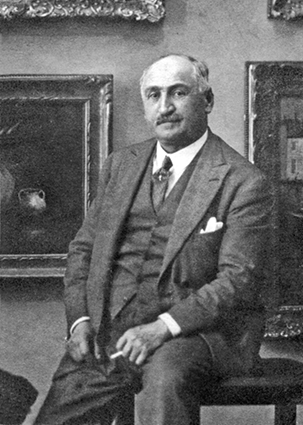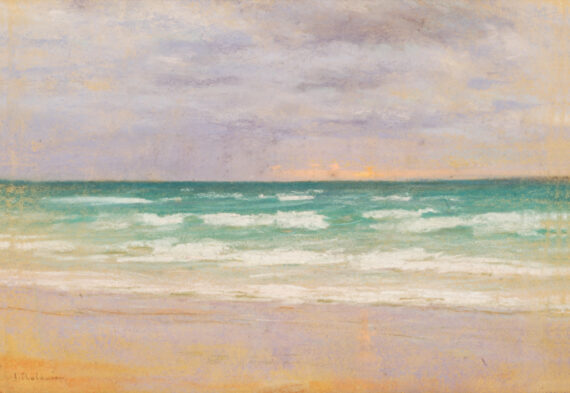ARSENE CHABANIAN (1864-1949)
Marina. Sunset on the beach
ARSENE CHABANIAN (1864-1949)
Marina. Sunset on the beach
310mm x 450mm
Pastel. Signed bottom left.
A pastelist uses sticks of coloured pigments rather like chalk sticks. There are oil, soft and hard pastels. This technique is incomparable for its transparency effect. The artist fully expresses his excellence as a colourist, combining the brightness of the tones by endlessly superimposing them, going from transparency to opacity.
Depending on the desired effect, he selects a rougher or smoother grained paper, sometimes tinting it to begin work on a background of colour, on which he places his colours by successive strokes of varying intensity, gliding or rubbed on, with his finger if necessary.
The disadvantage is that the powder in the pastel is fragile and its conservation is difficult, it is sensitive to light and can rub off. It is extremely important prevent a pastel from being an ephemeral work, because it has the particularity of expressing the artist’s sensuality.

Arsène Chabanian was born in an Armenian village near Erzerum and painted mainly marine landscapes.
His secondary education was completed at the Moorat-Raphael school of the Mekhitarist monastery on the island of San Lazaro opposite Venice, but he dedicated himself to painting and attended the lessons given by painter Antonio Ermolao Paoletti (1834-1912) at the Academy of Fine Arts.
Against the advice of his family, who wanted him to become a doctor once he had returned to his homeland, he left for Theodosia in Russia where he presented his works to the painter Aïvazovski who brought him into his studio in Crimea. On his advice he went to Paris, decided to devote himself entirely to his art, and enrolled at the Académie Julian where he was taught by Gustave Moreau, Jean-Paul Laurens and Benjamin Constant. He made trips to England, and exhibited his works in Belgium, Italy and Japan together with French artists, and in his own right in Egypt.
He participated in the World’s Fair in Paris in 1900. He was one of the founders of the “Society of Marine Painters.” In 1926, his personal works were exhibited at the “Georges Petit” gallery, after which he was awarded the Légion d’Honneur [the highest French order of merit]. He then took part in several group exhibitions. He died in Paris in 1949.
His works are exhibited in many museums in New York, Buenos Aires, Berlin, Washington, Munich and others.
Frederic Fringhian
